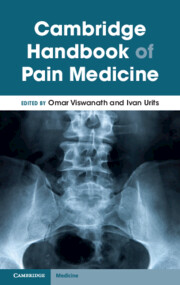Book contents
- Cambridge Handbook of Pain Medicine
- Cambridge Handbook of Pain Medicine
- Copyright page
- Contents
- Contributors
- Pain Handbook Introduction
- Part I Introduction to Pain: Pain Signaling Pathways
- Part II Common Categories of Pharmacologic Medications to Treat Chronic Pain
- Chapter 4 Nonsteroidal Anti-inflammatory Drugs (NSAIDs)
- Chapter 5 Acetaminophen
- Chapter 6 Topicals
- Chapter 7 Muscle Relaxants
- Chapter 8 Opioids
- Chapter 9 Antineuropathic Medications
- Chapter 10 Cannabinoids
- Part III Chronic Pain Conditions Head and Neck
- Part IV Spine
- Part V Extremities
- Part VI Misc
- Part VII Adjunctive Therapy
- Index
- References
Chapter 9 - Antineuropathic Medications
from Part II - Common Categories of Pharmacologic Medications to Treat Chronic Pain
Published online by Cambridge University Press: 01 December 2023
- Cambridge Handbook of Pain Medicine
- Cambridge Handbook of Pain Medicine
- Copyright page
- Contents
- Contributors
- Pain Handbook Introduction
- Part I Introduction to Pain: Pain Signaling Pathways
- Part II Common Categories of Pharmacologic Medications to Treat Chronic Pain
- Chapter 4 Nonsteroidal Anti-inflammatory Drugs (NSAIDs)
- Chapter 5 Acetaminophen
- Chapter 6 Topicals
- Chapter 7 Muscle Relaxants
- Chapter 8 Opioids
- Chapter 9 Antineuropathic Medications
- Chapter 10 Cannabinoids
- Part III Chronic Pain Conditions Head and Neck
- Part IV Spine
- Part V Extremities
- Part VI Misc
- Part VII Adjunctive Therapy
- Index
- References
Summary
Neuropathic pain (NP) is a subtype of chronic pain syndrome defined by International Association of the Study of Pain (IASP) as a “pain caused by a lesion or disease of the somatosensory system.” Consequence of CNS or PNS lesions are activities generated in the somatosensory system without peripheral afferent stimulation. The pathophysiology of the somatosensory system is injury causing complex ectopic signaling between neuronal pathways. There are several types of antineuropathic medications that are currently utilized to treat this subtype of pain, including gabapentin, pregabalin, and duloxetine, amongst others.
- Type
- Chapter
- Information
- Cambridge Handbook of Pain Medicine , pp. 61 - 65Publisher: Cambridge University PressPrint publication year: 2023



